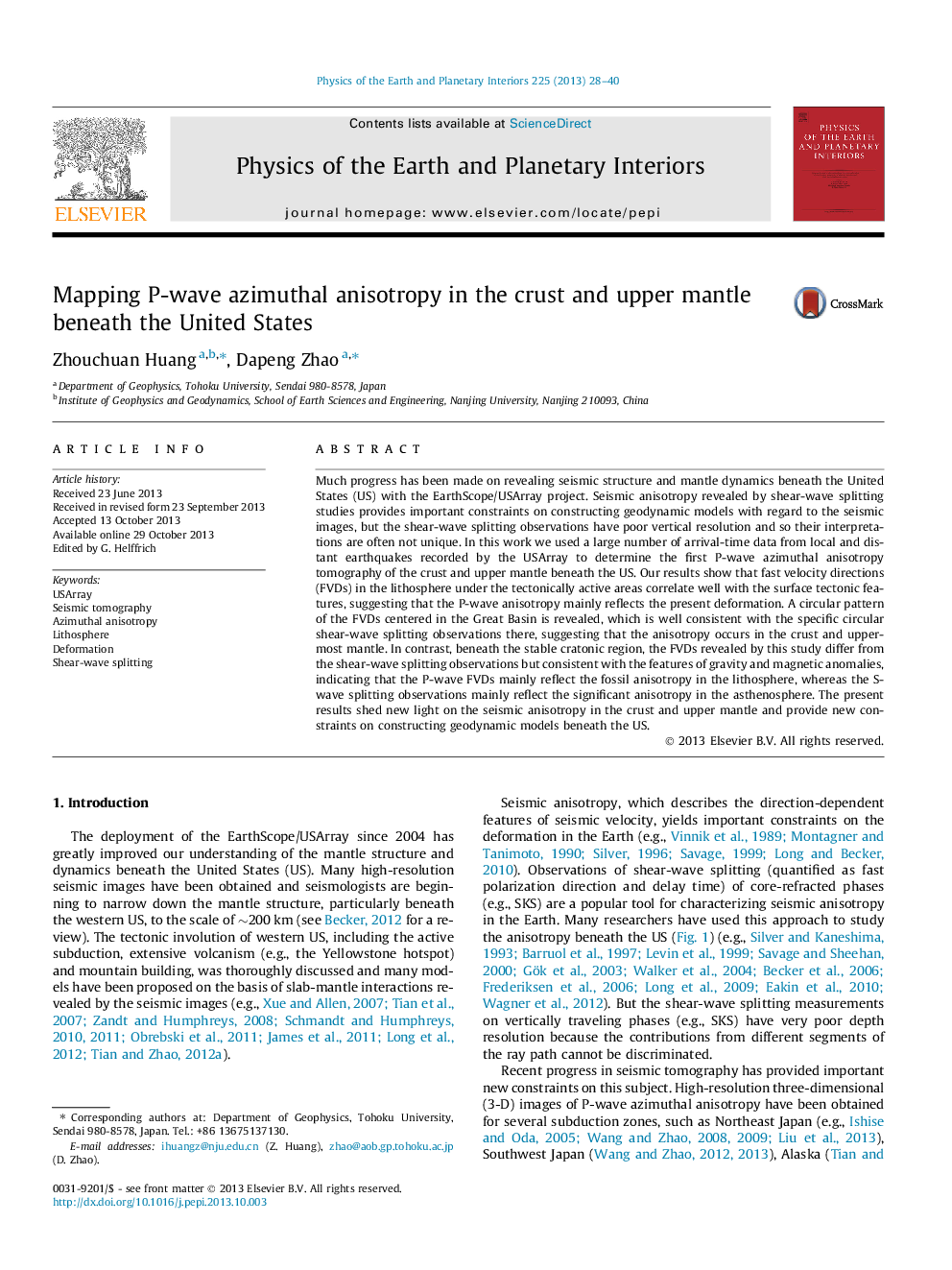| Article ID | Journal | Published Year | Pages | File Type |
|---|---|---|---|---|
| 6447589 | Physics of the Earth and Planetary Interiors | 2013 | 13 Pages |
Abstract
Much progress has been made on revealing seismic structure and mantle dynamics beneath the United States (US) with the EarthScope/USArray project. Seismic anisotropy revealed by shear-wave splitting studies provides important constraints on constructing geodynamic models with regard to the seismic images, but the shear-wave splitting observations have poor vertical resolution and so their interpretations are often not unique. In this work we used a large number of arrival-time data from local and distant earthquakes recorded by the USArray to determine the first P-wave azimuthal anisotropy tomography of the crust and upper mantle beneath the US. Our results show that fast velocity directions (FVDs) in the lithosphere under the tectonically active areas correlate well with the surface tectonic features, suggesting that the P-wave anisotropy mainly reflects the present deformation. A circular pattern of the FVDs centered in the Great Basin is revealed, which is well consistent with the specific circular shear-wave splitting observations there, suggesting that the anisotropy occurs in the crust and uppermost mantle. In contrast, beneath the stable cratonic region, the FVDs revealed by this study differ from the shear-wave splitting observations but consistent with the features of gravity and magnetic anomalies, indicating that the P-wave FVDs mainly reflect the fossil anisotropy in the lithosphere, whereas the S-wave splitting observations mainly reflect the significant anisotropy in the asthenosphere. The present results shed new light on the seismic anisotropy in the crust and upper mantle and provide new constraints on constructing geodynamic models beneath the US.
Related Topics
Physical Sciences and Engineering
Earth and Planetary Sciences
Geophysics
Authors
Zhouchuan Huang, Dapeng Zhao,
